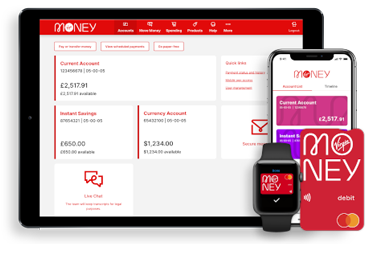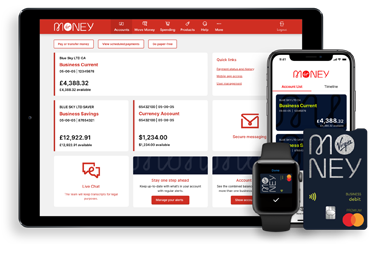What to do if your business is operating at a loss
< back to all business news articles
11/08/2017
The first thing you need to identify is why you’re operating at a loss. If you’re still in the start-up phase and you know it will take time to break-even then it’s probably ok. But if you’ve been operating for a time, sit down and try to determine why you’re still making a loss.

Is it;
- The loss of a key client
- A competitor has taken your customers
- You can’t make a decent margin with rising costs and you’re unable to increase price
- Customers think your prices are too high and switch to lower cost businesses
- The demand for what you do is drying up
- Customers have switched how they buy, such as online rather than retail
Review your business with a SWOT analysis (Strengths, Weaknesses, Opportunities and Threats), implement solutions to fix and if necessary, get professional help.
Here are 5 steps you can take to remedy the situation.
Step 1: Sell more to existing customers
Sounds obvious, but your existing customers are your best prospects for immediate sales. They offer the most cost-effective way to increase business because you’ve already spent money on acquiring these customers. They already know and trust your business and are therefore likely to reorder or order more from you. You can:
- Go see key customers if you’re selling business to business. You’d be surprised how many will re-order after a visit.
- Use the 80/20 rule where 20% of customers tend to provide a business with 80% of its revenue. It therefore makes sense to concentrate on this 20% segment first. Use your business data to focus on the best buyers and the customers with the most potential.
- Create a customer contact campaign. Set up an email database and send monthly e-newsletters with specials and “customer only” deals. Find your customers on social media and engage with them; make them feel like you are listening to them.
Step 2: Find new customers
The best new customers are likely to match the profile of your current top customers.
- Take active steps to gain referrals. Where appropriate, ask existing customers for referrals and develop incentives for customers to refer others.
- Use social media and search profiling to create ads that target your specific demographic.
- Implement a 90 day campaign to actively seek new clients with promotions, direct contact, in-bound and out-bound tactics. Profile your best customers and then see where there are more of them in new areas.
- Identify any businesses that you could partner with, sharing marketing costs. If you have similar targets, you could refer business to each other. Network and communicate to your industry that you’re keen for new business.

Step 3: Reduce costs
One of the most effective ways of improving your cash flow so that there’s more money in your business is to find ways to reduce costs. For instance, you could:
- Get new quotes for all suppliers (such as insurance,printing, and office supplies), utilities such as electricity, heating, telephone, and Internet services.
- Contact existing suppliers to renegotiate lower prices and extended credit terms.
- Implement “just-in-time” inventory methods to help reordering stock as you need it rather than buying in bulk.
- Look to work jointly with another business also seeking to share resources (such as equipment and staff).
- Hold a sale to move surplus stock.
- Identify and sell underused assets—you can lease most things instead of owning them.
- Consider discounting your outstanding customer invoices to a factoring company.
- Lower your staff costs. Consider outsourcing tasks like payroll, and look at using contractors for project-related jobs.
- Streamline your processes. Look at ways you can use technology to make your processes and systems more efficient. There might be administrative tasks that you can ditch altogether.
Step 4: Increase prices
This should be done anyway, even if it’s just to keep up with inflation. But it’s also a good way to get more cash coming into the business. Consider these tactics:
- A small increase such as 5% across everything you do. It’s small enough not to cause too much disruption, but if it’s every product and service then the volume could be enough to show significant gain.
- Pricing differently to customers, assuming that prices are confidential (such as closed contracts). Assess carefully if you can increase your hourly rate, or add on legitimate charges you may previously have done for free.
- Take a look at your range of products and services and increase those not price sensitive.
Products that customers view as necessary also tend to have a low price sensitivity. For example, people will pay more for gas and tolerate a price increases because it’s a necessary expense.
Step 5: Increase your cash reserves
If you think the emergency is only temporary, then you could raise extra cash until the crisis is over. You could;
- Invest more of your own money in the business. For example, raise more money against an asset such as a property you own. Be sure to consult with your personal financial advisor and accountant before risking more of your own funds to make sure you can afford to do it.
- Raise cash from relatives, friends, investors.
- Sell part of your business to employees, other business owners or investors who see the potential of your business and know there is a long term benefit.
- Talk to us about the possibility of a short-term loan if you need some cover.
Summary
In the end, turning your business around from operating at a loss to showing a profit comes down to reviewing your business practices carefully and honestly so that you can pinpoint where you’re going wrong. Once you’ve identified why you’re operating at a loss, putting a plan in place to deal with it, and sticking to it, is the best way to turn things around.
POSTED IN: Day to Day Banking,Debt Management,2017
SHARE
Related Articles
You can find impartial information and guidance on money matters on the “MoneyHelper” website.
Clydesdale Bank is covered by the Financial Services Compensation Scheme (FSCS), Find out more.


